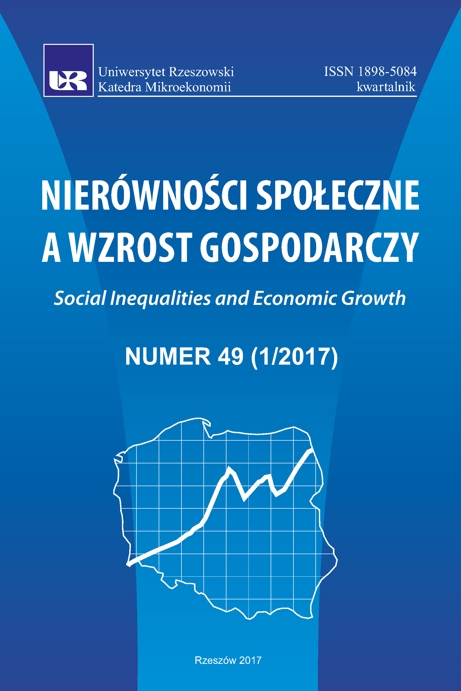Zmiany strukturalne jako determinanta popytu na kapitał ludzki
Structural changes as determinant of demand for human capital
Author(s): Magdalena CyrekSubject(s): Economy, National Economy, Socio-Economic Research
Published by: Wydawnictwo Uniwersytetu Rzeszowskiego
Keywords: human capital; education; specific knowledge; general knowledge; structure of employment; branches; occupations
Summary/Abstract: The study deals with a problem of changes in demand for human capital, that are caused bystructural changes in Polish economy in the context of its convergence with the EU structures. Therewas assumed that structural features that are observed nowadays in the EU as a whole constitutea model for development of these countries that limit their development gap. Thus, a direction oftransformation in branch relationships leads to convergence of Poland with other EU members andchanges in branch relationships determine demand for human capital.The research was aimed at identification of the realised demand for human capital, concerninga level and a character of the resources. Considering the first aspect there was assumed that an indicatorof a level of human capital engaged in economic processes is education of the employees.There were made comparisons of a share of highly educated employees in Poland and the EU,a structure of education in branches, as well as a share of employment in knowledge-intensiveactivities. The identified development tendencies showed decreasing development gap of Polisheconomy, connected with creation of a knowledge-based economy. The essential barrier of humancapital absorption in Poland appears to be unfavorable structure of branches.The second aspect of the analysis was connected with a character of the engaged human capital,that was specified as basing on general or specific knowledge. To identify the character ofknowledge there was assessed a concentration of occupations between branches and a share ofprofessional groups in the specified branches. Disparities between Polish economy and the EU countriesare described by a lower share of occupations and branches basing on a general knowledgein Poland. Meanwhile development trends show an increase of such kind of knowledge. A barrierto achieve cohesion within EU in this dimension also appeared to be the unfavorable branch relationshipsin Poland.
Journal: Nierówności Społeczne a Wzrost Gospodarczy
- Issue Year: 2017
- Issue No: 49
- Page Range: 48-72
- Page Count: 25
- Language: Polish

